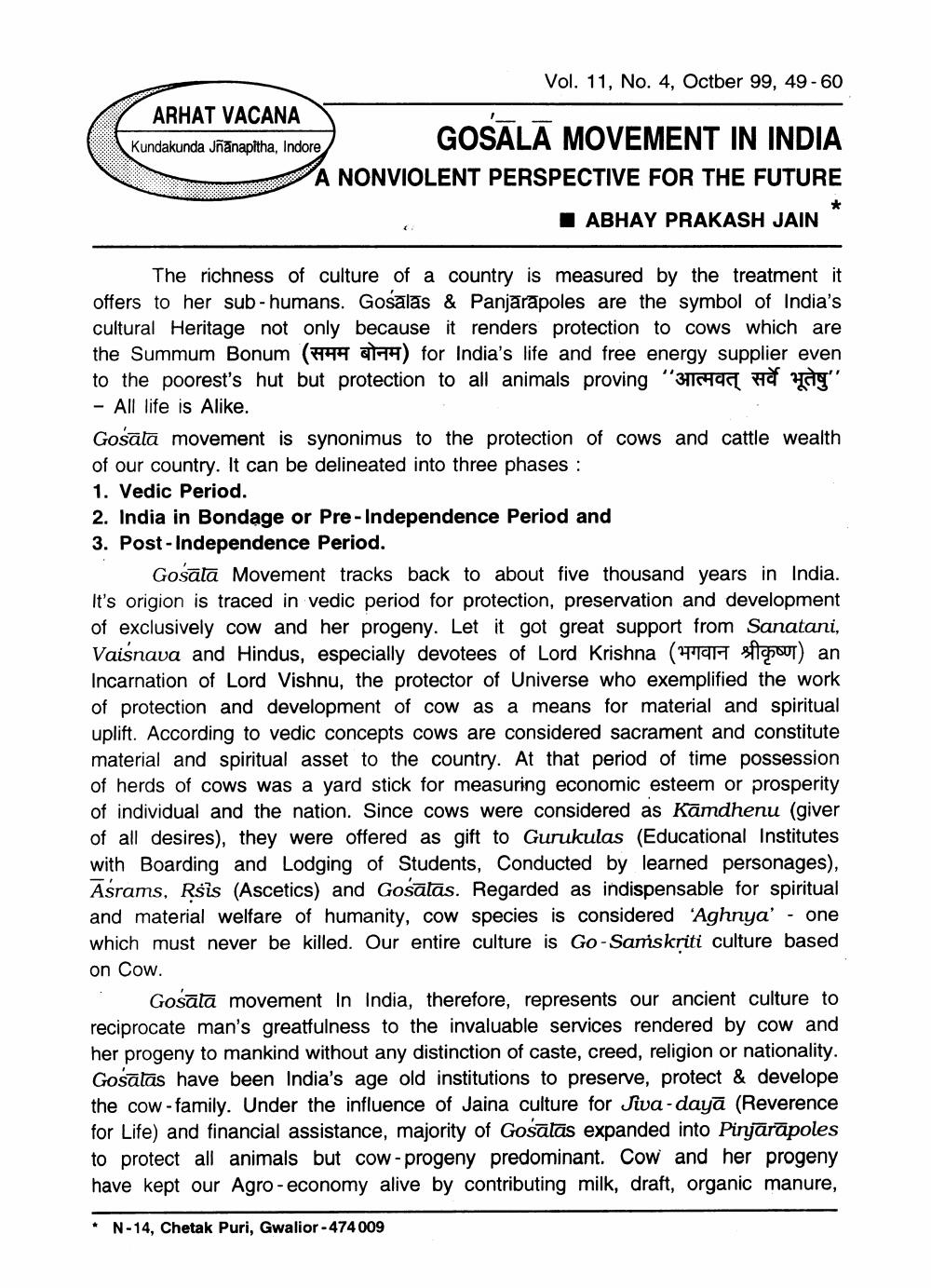________________
ARHAT VACANA
Kundakunda Jñanapitha, Indore
Vol. 11, No. 4, Octber 99, 49-60
GOSALA MOVEMENT IN INDIA A NONVIOLENT PERSPECTIVE FOR THE FUTURE ABHAY PRAKASH JAIN
The richness of culture of a country is measured by the treatment it offers to her sub-humans. Gosalas & Panjarapoles are the symbol of India's cultural Heritage not only because it renders protection to cows which are the Summum Bonum (4) for India's life and free energy supplier even to the poorest's hut but protection to all animals proving "Hď Hàg“
- All life is Alike.
Gosāla movement is synonimus to the protection of cows and cattle wealth of our country. It can be delineated into three phases:
1. Vedic Period.
2. India in Bondage or Pre-Independence Period and
3. Post-Independence Period.
Gosala Movement tracks back to about five thousand years in India. It's origion is traced in vedic period for protection, preservation and development of exclusively cow and her progeny. Let it got great support from Sanatani, Vaisnava and Hindus, especially devotees of Lord Krishna (g) an Incarnation of Lord Vishnu, the protector of Universe who exemplified the work of protection and development of cow as a means for material and spiritual uplift. According to vedic concepts cows are considered sacrament and constitute material and spiritual asset to the country. At that period of time possession of herds of cows was a yard stick for measuring economic esteem or prosperity of individual and the nation. Since cows were considered as Kamdhenu (giver of all desires), they were offered as gift to Gurukulas (Educational Institutes with Boarding and Lodging of Students, Conducted by learned personages), Asrams. Ṛsis (Ascetics) and Gosālās. Regarded as indispensable for spiritual and material welfare of humanity, cow species is considered 'Aghnya' one which must never be killed. Our entire culture is Go-Samskriti culture based on Cow.
Gosāla movement In India, therefore, represents our ancient culture to reciprocate man's greatfulness to the invaluable services rendered by cow and her progeny to mankind without any distinction of caste, creed, religion or nationality. Gosālās have been India's age old institutions to preserve, protect & develope the cow-family. Under the influence of Jaina culture for Jiva-daya (Reverence for Life) and financial assistance, majority of Gosālās expanded into Pinjarapoles to protect all animals but cow-progeny predominant. Cow and her progeny have kept our Agro-economy alive by contributing milk, draft, organic manure,
N-14, Chetak Puri, Gwalior-474 009




